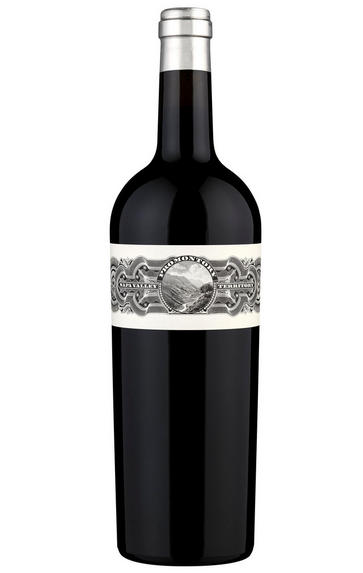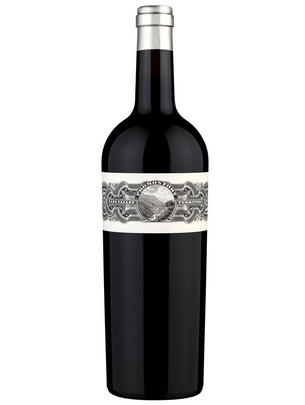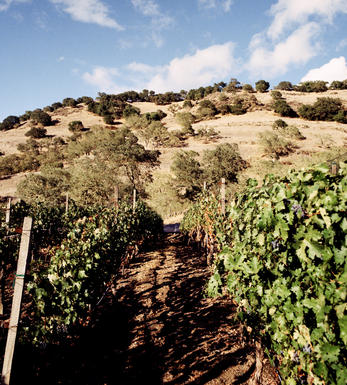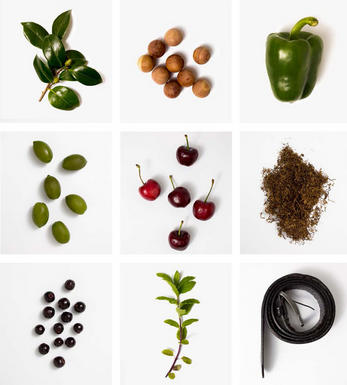
2012 Promontory, Napa Valley, California, USA

Critics reviews
Tasted Oct 2015, 96/100
Tasted October 2016, 97/100
About this WINE

Promontory
Owned by the Harlan family of Harlan Estate, Promontory lies on one of the unique sites in Oakville and represents the next step in Bill Harlan’s plan to establish a wine dynasty in California. Its wines are some of the most sought-after in the world and perfectly represent the power and potential of Napa Valley.
Bill Harlan first stumbled across this land in the 1980s. While its rare metamorphic soils held immense promise, the land had been decimated; the soils were essentially destroyed and robbed of their organic matter.
A regeneration process is still in place at Promontory. Vines are largely untrellised; plots are scattered around the farm and are less domesticated than in many US estates. This gives the Promontory team an astounding range of microclimates and aspects, each imparting a distinct, raw sense of place to the resulting wines.
The team at Promontory employs unusual techniques to coax the best out of their high-altitude vines; vineyards are “mixed pace”, and each vine is allowed to develop at its rate. They also employ “dry farming”, an incredibly rare choice that avoids irrigating crops during a dry season. In this way, they ensure a greater concentration of fruit in their wines and future-proof themselves for summers when water will be in increasingly scarce supply.

Napa Valley
North Coast's Napa Valley is California's most famous viticultural area (AVA), claiming some of the most expensive agricultural land in the world and producing wines of ‘cult’ status.
Its 16,000 ha of vines lie over a strip (40 miles long-5 miles wide) of diverse soils (clay, gravely, volcanic), with its northernmost end on the side of Mountain Helena and its foot in San Francisco Bay. The valley is framed by two mountains ranges Vaca (to the north) and Mayacamas (to the south), yet the main climatic influence is the cool wind and fog that is sucked in from San Pablo Bay during the afternoon, allowing grapes to ripen slowly and evenly.
The area enjoys a variety of unique microclimates, as temperatures can vary dramatically as much as 15 degrees, from the north to the south end of the valley. These differences have led to the creation of several sub-AVAs (14 in total) including:
Atlas Peak, Chiles Valley District, Diamond Mountain District, Howell Mountain, Los Carneros, Mt. Veeder, Oakville, Rutherford, St. Helena, Spring Mountain District, Stags Leap District, Yountville, Wild Horse Valley and Oak Knoll District. The Calistoga AVA is still pending approval.
Both the “Napa Valley” designation and the sub-AVA name must appear on the wine label simultaneously, with the exception of wines from the Carneros AVA, which is shared between the Napa Valley and the Sonoma County.
Cabernet Sauvignon is the undisputed king of Napa grapes, occupying over 45% of the vineyard acreage, followed by (predominantly) Chardonnay, Sauvignon Blanc, Chenin Blanc, Riesling, Zinfandel, Merlot, Cab. Franc and to a lesser extent Petite Sirah, Sangiovese, Barbera, Dolcetto.
Recommended Producers
Frog's Leap, Dominus, David Ramey, Viader, Stag's Leap Cellars, Paras Vineyards, Heitz.

Cabernet Sauvignon
The most famous red wine grape in the world and one of the most widely planted.
It is adaptable to a wide range of soils, although it performs particularly well on well-drained, low-fertile soils. It has small, dusty, black-blue berries with thick skins that produce deeply coloured, full-bodied wines with notable tannins. Its spiritual home is the Médoc and Graves regions of Bordeaux where it thrives on the well-drained gravel-rich soils producing tannic wines with piercing blackcurrant fruits that develop complex cedarwood and cigar box nuances when fully mature.
The grape is widely planted in California where Cabernet Sauvignon based wines are distinguished by their rich mixture of cassis, mint, eucalyptus and vanilla oak. It is planted across Australia and with particular success in Coonawarra where it is suited to the famed Terra Rossa soil. In Italy barrique aged Cabernet Sauvignon is a key component in Super Tuscans such as Tignanello and Sassicaia, either on its own or as part of a blend with Sangiovese.


Buying options
Add to wishlist
Description
Reticent and tight at first on the nose, the wine opens up to reveal dark, small-berried cassis fruit, fruits of the forest and wet stone. The palate is the essence of power and elegance, like a giant slalom skier – elegant, suave in form, yet with great power and strength. The palate is full of minerality, with black and red fruit, and an iron or pepper-like spiciness. This has great acidity at the front and tensile tannins – ripe yet tight and huge, boding very well for its future development. One can almost see the remoteness and wildness of this unique vineyard, in terms of the wine’s strength and brooding darkness, yet at the same time an almost effortless, wistful, cerebral quality. For me, it has a distinct personality and sense of place, hints of Napa in the fruit and yet the structure reminded me of the strength and iron core so often found in the likes of Ch. Latour versus its other First Growth Bordeaux peers. Much like some of the world’s finest and most complex wines, this is a wine made on the edge of what is possible, truly expressive of its surroundings, opening and closing over its evolution, flirting with perfection. It’s something very special. It’ll be hard to resist over the next few years, but this has the stuffing to last very easily over the next decade or so. Drink 2027-35+.
Stuart Rae, Fine Wine Commercial Manager
Returning to my original tasting notes, it is clear I must have been utterly captivated by the 2012 Promontory. Descriptors referencing black forest gâteaux, macerated blueberries and baking spices of all kind were scribbled with haste to capture the character of the wine before the next intriguing layer unfurled. On reflection, my initial excitement remains palpable, what a truly glorious offering. The precision and purity on the nose is remarkable, a crystalline clarity like you’re smelling in high definition, there’s lots of everything but not too much of anything. Cherry and blackcurrant fruit is rich and dense, but held in check by granite and cool stone. Left in the glass, a cooling freshness persists. So fine is the interplay of lustrous berries and svelte, silky tannins that, for a red of such grand proportions, it seems almost refreshing. All before a finish that lasts an age. Outstanding and a real joy to drink, an experience any wine lover should aspire to.
Jared Ehret, Private Account Manager
wine at a glance
Delivery and quality guarantee